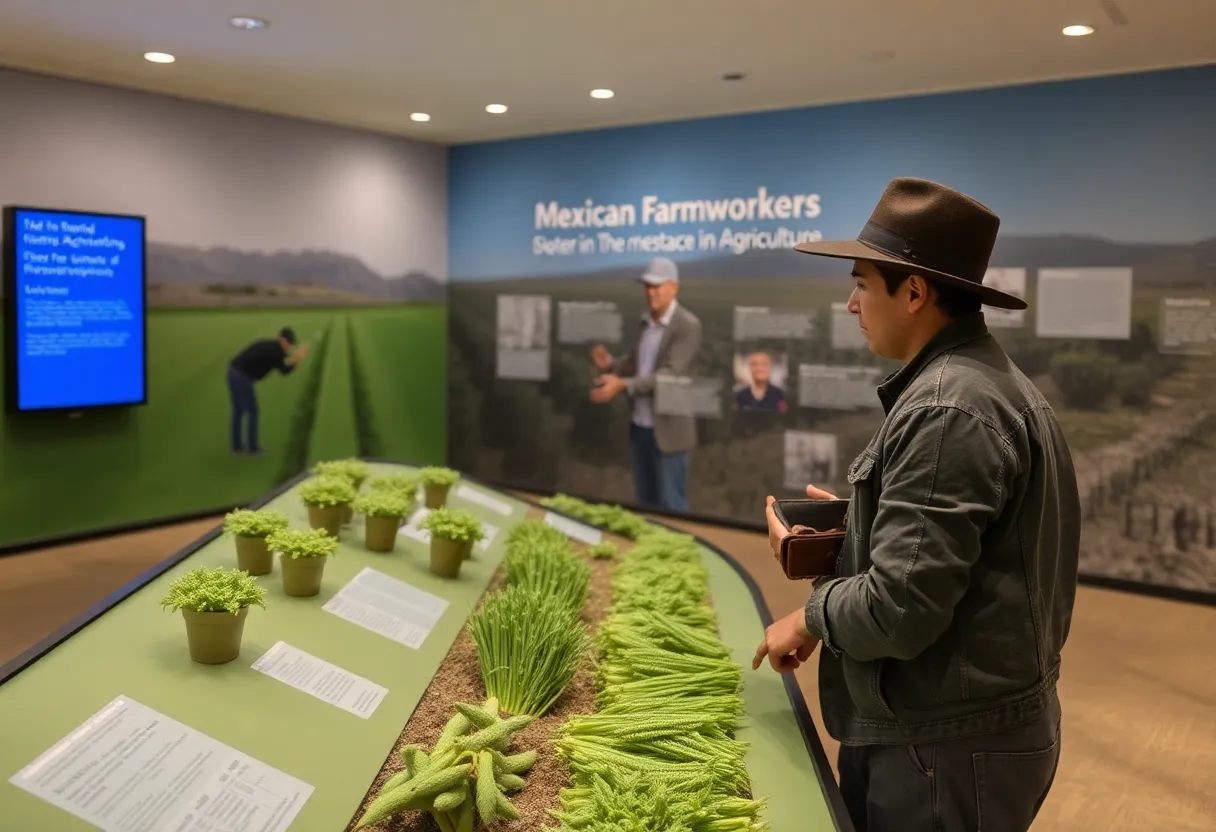Tucson, AZ, October 14, 2025
A Tucson non-profit has launched new interactive exhibits at the Mexican Farmworker Museum, showcasing the historical contributions of agricultural laborers in Southern Arizona. The exhibits highlight migration stories and resilience, aimed at educating families and school groups about the region’s agricultural heritage. Since the unveiling, attendance has increased, emphasizing the community’s growing interest in cultural histories and labor rights.
Tucson Non-Profit Unveils New Exhibits at Mexican Farmworker Museum
Tucson, AZ – A local non-profit organization has launched new exhibits at the Mexican farmworker museum, focusing on the historical contributions of agricultural laborers in Southern Arizona. The interactive displays highlight stories of migration and resilience, aiming to educate visitors about the region’s deep-rooted agricultural heritage. This initiative, announced on October 14, 2025, is drawing early interest from families and school groups seeking to learn more about cultural histories.
The new exhibits feature hands-on elements that bring to life the experiences of Mexican farmworkers who have shaped Southern Arizona’s farming communities over generations. Visitors can explore narratives of their journeys, challenges faced during migration, and the enduring strength that defined their roles in the local economy. These displays are designed to make history accessible, encouraging younger audiences to connect with the past through engaging, interactive formats.
Focus on Education and Community Engagement
The museum’s expansion targets educational outreach, with programs tailored for school groups to integrate these stories into classroom learning. Families visiting the site now have opportunities to participate in guided tours that emphasize the human element behind Southern Arizona’s agricultural success. The non-profit behind the project sees this as a vital step in preserving oral histories and artifacts that might otherwise fade from public awareness.
Funding for the new exhibits comes from various grants, which have enabled the museum to enhance its facilities and broaden its reach. This financial support aligns with increasing public curiosity about cultural heritage in the area. Organizers report that attendance has already seen an uptick since the unveiling, suggesting the museum is successfully fostering a greater appreciation for the labor that built the region’s food production systems.
Historical Context of Farmworkers in Southern Arizona
Southern Arizona’s agricultural landscape owes much to the contributions of Mexican farmworkers, whose labor has been integral since the early 20th century. The museum serves as a dedicated space to document this legacy, showcasing how migration patterns influenced local farming practices. Exhibits detail the resilience shown by these workers amid economic shifts, environmental challenges, and social changes over decades.
The initiative builds on the museum’s existing collection by adding modern interpretive tools, such as digital timelines and multimedia presentations. These elements help contextualize the broader impacts of farmworker contributions, from irrigation innovations to community-building efforts in rural areas. By focusing on personal stories, the displays humanize the statistics often associated with agricultural history.
Impact on Local Awareness
Local educators and community leaders have noted the potential for these exhibits to spark discussions on topics like labor rights and cultural integration. The non-profit’s efforts are part of a larger movement to recognize underrepresented histories in Arizona, ensuring that the narratives of farmworkers are not overlooked in contemporary education. With the expansion, the museum now offers year-round programming to sustain visitor engagement.
As interest grows, the project is positioned to play a key role in cultural preservation. The combination of grant funding and community support underscores the importance placed on maintaining these stories for future generations. Visitors are encouraged to explore how the resilience depicted in the exhibits continues to influence Southern Arizona’s identity today.
Broader Significance for Cultural Heritage
The unveiling reflects a timely push to honor the foundational roles played by Mexican farmworkers in sustaining agriculture. Through interactive means, the museum bridges historical events with present-day relevance, prompting reflection on ongoing issues in farming communities. This development enriches Tucson’s cultural offerings, providing a venue for learning that extends beyond traditional textbooks.
In total, the new exhibits represent a comprehensive effort to illuminate a vital aspect of Southern Arizona’s past. By prioritizing education and interactivity, the non-profit is ensuring that the stories of migration and resilience reach a diverse audience, fostering a deeper understanding of the area’s heritage.
FAQ
What is the main focus of the new exhibits at the Mexican farmworker museum?
The new exhibits focus on the historical contributions of agricultural laborers in Southern Arizona, highlighting stories of migration and resilience.
Where is the Mexican farmworker museum located?
The Mexican farmworker museum is located in Tucson, AZ.
When was the unveiling of the new exhibits announced?
The unveiling was announced on October 14, 2025.
Who is the target audience for these exhibits?
The exhibits aim to educate visitors, drawing families and school groups.
How are the new exhibits funded?
Funding comes from grants that support the museum’s expansion.
What is the purpose of the initiative?
The initiative aims to educate visitors on the agricultural roots of Southern Arizona amid growing interest in cultural heritage.
Key Features of the Mexican Farmworker Museum Exhibits
| Feature | Description |
|---|---|
| Interactive Displays | Tell stories of migration and resilience through hands-on experiences. |
| Educational Focus | Aims to teach about Southern Arizona’s agricultural roots for families and school groups. |
| Funding Source | Supported by grants for expansion amid growing cultural heritage interest. |
| Historical Emphasis | Honors the contributions of Mexican farmworkers in the region. |
| Unveiling Date | October 14, 2025, in Tucson, AZ. |




